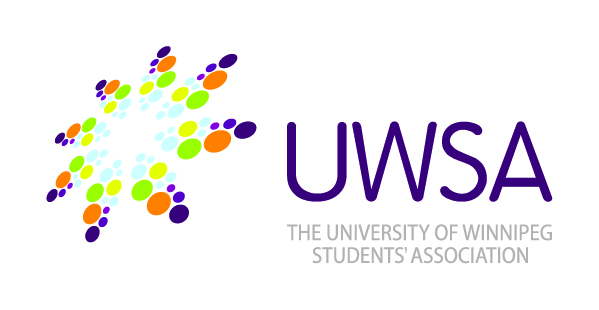May 20th, 2020
Accessing funds is crucial during the COVID-19 health crisis. According to a survey commissioned by the Canadian Association of University Teachers (CAUT) and the Canadian Federation of Students (CFS), Over two thirds of students say their personal finances and those of their parents or family have been affected by the pandemic.
Many students might be eligible for income support from the Government of Canada but the different options available can be confusing. Read on to learn about the difference between the different benefits and pick the best option for you.
Canadian Emergency Response Benefit (CERB)
What is it?
The Canada Emergency Response Benefit (CERB) gives financial support to employed and self-employed Canadians who are directly affected by COVID-19.
Amount: $2000 for every four-week for up to 16 weeks. You will need to re-apply after every four weeks.
You are eligible if you meet all the following requirements:
- You are at least 15 years-old and residing in Canada.
- You stopped working because of reasons related to COVID-19 OR are eligible for Employment Insurance regular or sickness benefits OR have exhausted your Employment Insurance regular/fishing benefits between December 29, 2019 and October 3, 2020.
- You had an employment and/or self-employment income of at least $5,000 in 2019 or in the 12 months prior to the date of their application.
- You have not quit your job voluntarily.
- When submitting your first claim, you cannot have earned more than $1,000 in employment and/or self-employment income for 14 or more consecutive days within the four-week benefit period of your claim.
- When submitting subsequent claims, you cannot have earned more than $1,000 in employment and/or self-employment income for the entire four-week benefit period of your new claim.
Note: You are expected to pay back the CERB if you did not meet the criteria.
Apply: You can apply for CERB through Service Canada or Canada Revenue Agency (CRA), not both. Click here for more information on how to apply for CERB through CRA.
Canadian Emergency Student Benefit (CESB)
What is it?
The Canada Emergency Student Benefit (CESB) provides financial support to post-secondary students, and recent post-secondary and high school graduates who are unable to find work due to COVID-19.
This benefit is for students who do not qualify for the Canada Emergency Response Benefit (CERB) or Employment Insurance (EI).
Amount: $1,250 per month for eligible students from May through August 2020, and $2000 for students with dependents and those with disabilities. You have to re-apply every month.
You are eligible if you meet all the following requirements:
- You are not eligible for CERB or Employment Insurance (EI).
- You are unable to work, find work, or have earned less than $1000 in the last month.
- You are enrolled in a post-secondary educational program (at least 12 weeks in duration) that leads to a degree, diploma, or certificate, or; Have completed or ended your post-secondary studies in December 2019 or later, or; have completed or expect to complete high school, or received, or expect to receive your high school equivalency in 2020, and have applied for a post-secondary educational program that starts before February 1, 2021.
- International students are not eligible for CESB.
Note: In their application, students who are able to work must attest that they are actively looking for a job to be eligible to receive the CESB.
Apply: Eligible students can apply for CESB through the Canada Revenue Agency starting May 15. Students must be registered with the CRA and have their direct deposit account details updated on their account to apply.
Click here to create your CRA account or call 1-800-959-2019 or 1-800-959-2041. Have your Social Insurance Number (SIN) and postal code ready before calling.
Employment Insurance (EI)
What is it?
Employment Insurance (EI) provides regular benefits to individuals who lose their jobs through no fault of their own (for example, due to shortage of work, seasonal or mass lay-offs) and are available for and able to work, but can’t find a job.
Amount: Varies based on insurable hours of employment. Click here for more information.
You are eligible if you meet all the following requirements:
- You were employed in insurable employment.
- You lost your job through no fault of your own
- You have been without work and without pay for at least seven consecutive days in the last 52 weeks.
- You have worked for the required number of insurable employment hours (630 hours if living in Winnipeg) in the last 52 weeks or since the start of your last EI claim, whichever is shorter.
- You are ready, willing and capable of working each day.
- You are actively looking for work (you must keep a written record of employers you contact, including when you contacted them).
Application: Employment Insurance is provided through Service Canada. Click here to start your application.
Please remember:
- You cannot claim both CERB or CESB and Employment Insurance (EI).
- You cannot claim both CERB and CESB.
Ensure that you pick the most appropriate service and budget accordingly. The Student Budget Worksheet is a great place to start planning your finances.
Canada Student Service Grant (CSSG):
The Government of Canada is also planning to launch the Canada Student Service Grant (CSSG), which will help students gain valuable work experience and skills while they help their communities during the COVID‑19 pandemic.
For students who choose to do national service and serve their communities, the new CSSG will provide up to $5,000 for their education in the fall.
More details will be made available on the “I Want to Help” platform soon.
Struggling to find employment?
The University of Winnipeg also lists numerous employment opportunities. Check out UWinnipeg Teaching Assistant and Marker positions here, as well as a bank of part-time and full-time employment here.
Effective April 22, 2020, International students are eligible to work for more than 20 hours a week, while enrolled in classes, as long as they are employed in an essential service. You can find more information here.










